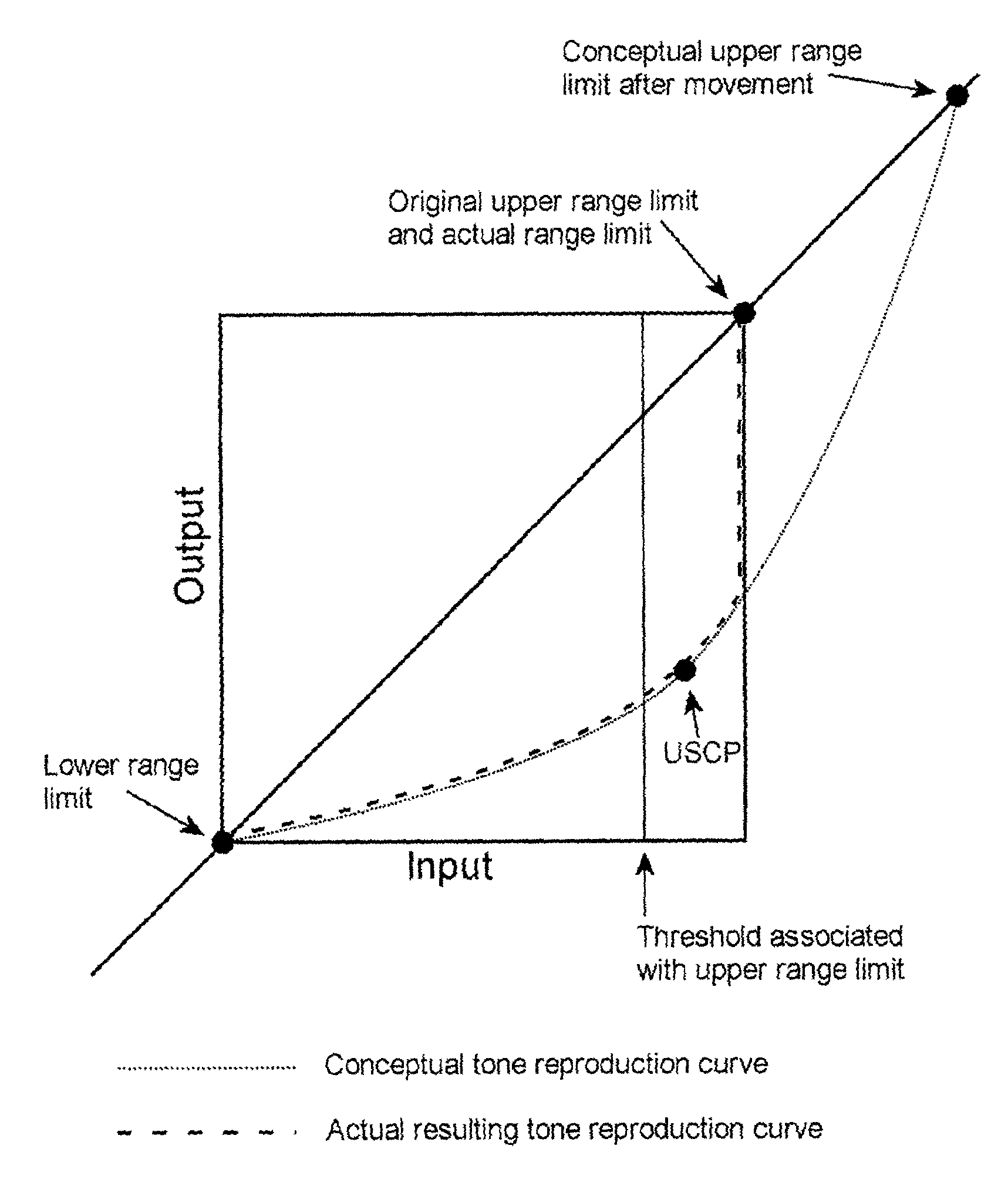Manual correction of an image color
a color correction and image technology, applied in the field of image correction, color imaging technology, digital color imaging technology, correction of color imbalances, can solve the problems of insufficient accuracy of image correction methods for images containing several million colors, neither these methods nor the automated methods provided a means of correcting a specific color in an imag
- Summary
- Abstract
- Description
- Claims
- Application Information
AI Technical Summary
Benefits of technology
Problems solved by technology
Method used
Image
Examples
Embodiment Construction
[0022]The invention operates on digital images in which information is supplied as a grid of points or pixels. Each pixel is associated with several numbers representing color information. Typically, these are three 8- or 12- or 16-bit values representing respectively red (R), green (G) and blue (B). While the invention will be illustrated using such RGB images as examples, it will be understood that more than three colors can be used to represent color information, that the color space used to define color need not be restricted to RGB (e.g., other color space values and formats may be used), and that the color information is not restricted to any specific form of numeric representation (e.g., linear, angular, digital, analog, etc.). Although the invention will be described in terms of calculations using all image pixels, it also understood that the invention may be applied to only a portion of the image pixels. Even though the invention will be described in terms of certain illust...
PUM
 Login to View More
Login to View More Abstract
Description
Claims
Application Information
 Login to View More
Login to View More - R&D
- Intellectual Property
- Life Sciences
- Materials
- Tech Scout
- Unparalleled Data Quality
- Higher Quality Content
- 60% Fewer Hallucinations
Browse by: Latest US Patents, China's latest patents, Technical Efficacy Thesaurus, Application Domain, Technology Topic, Popular Technical Reports.
© 2025 PatSnap. All rights reserved.Legal|Privacy policy|Modern Slavery Act Transparency Statement|Sitemap|About US| Contact US: help@patsnap.com


